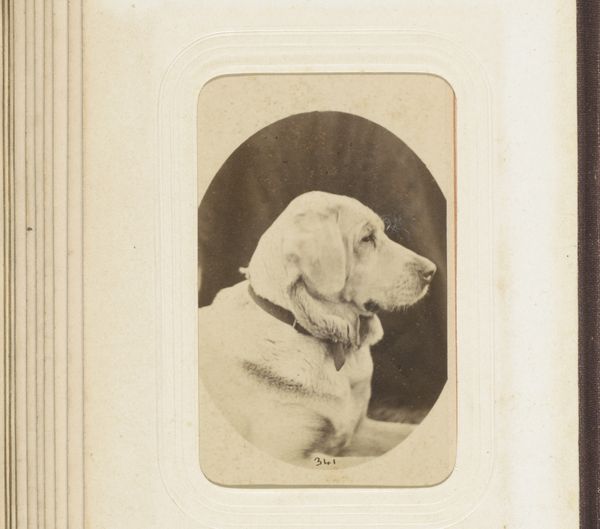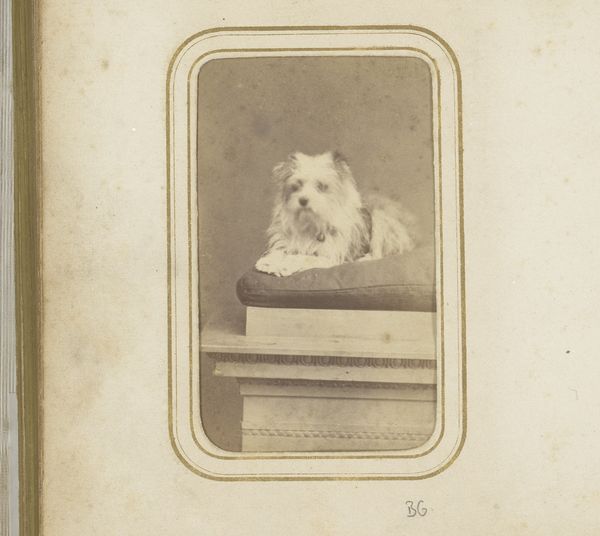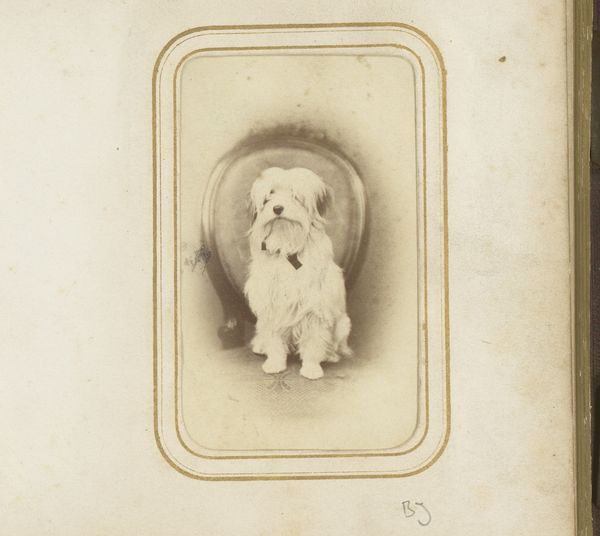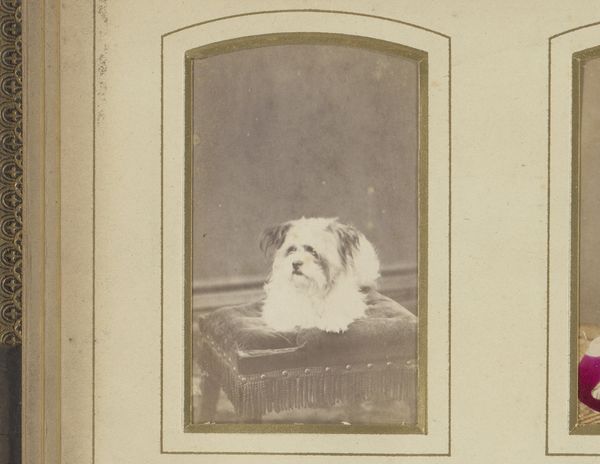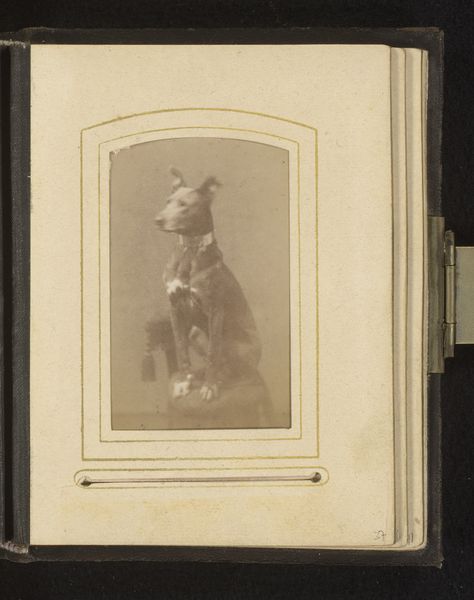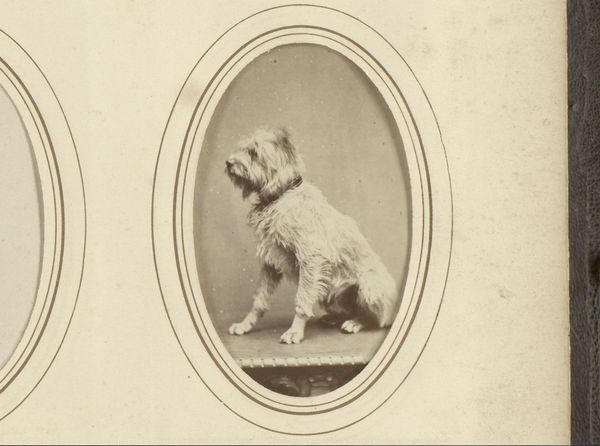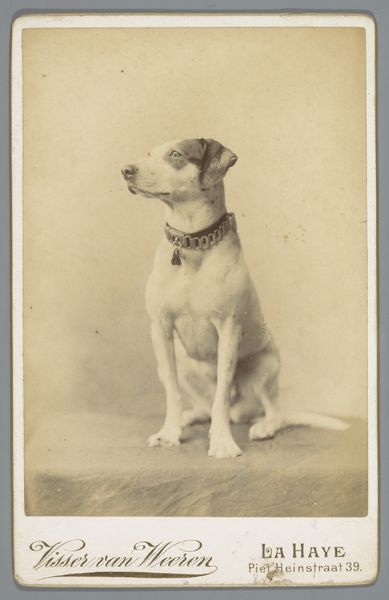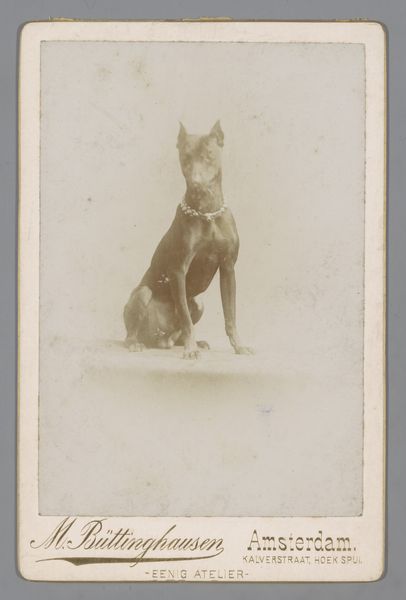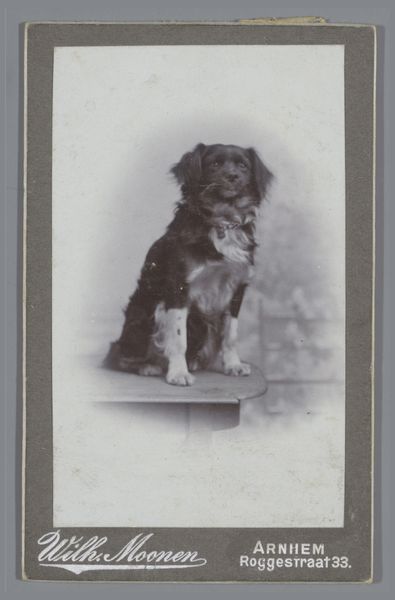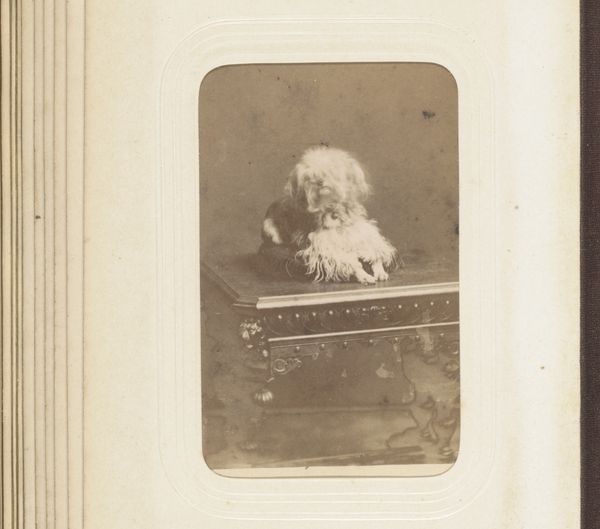
photography
#
portrait
#
still-life-photography
#
dog
#
photography
#
19th century
Dimensions: height 83 mm, width 51 mm
Copyright: Rijks Museum: Open Domain
Editor: This is an albumen print from around 1865, titled "Portret van een hond," or "Portrait of a Dog," made by De Lavieter & Co. It’s kind of amusing, seeing a dog posed like a proper Victorian gentleman. What strikes you about this piece? Curator: For me, the intrigue lies in the *making* of such an image. What societal conditions fostered a market for *cartes de visite* of pets, elevated to portraiture? Think of the labor involved: raising the animal, the skilled work to train the dog to sit still, not to mention the science to prepare an albumen print from glass negative. Editor: That's fascinating! It's easy to overlook the actual labor when looking at historical images. How did they even achieve such stillness with an animal back then? Curator: Precisely! And it points to a larger question. How did the rise of industrial capitalism, with its own system for organizing life in a photographic pose, shape the *human* relationship with animals into an commodity fit for material consumption and sentimental attachment? What were these photographers paid, versus more famous contemporaries, what are they saying through their production choices? Editor: So you're saying the value of this photo isn’t just aesthetic but also reveals information about Victorian society’s values, material culture and power structures related to labor? Curator: Absolutely. Every element, from the dog's collar to the ornate chair, speaks volumes about class, consumption, and the representation of domesticity. Think about the contrast –the material reality of raising this dog as labor as well the sentimental photo that might represent familial comfort. Editor: That shifts my understanding entirely. It is more than just a dog portrait. I'll be approaching photography through that lens from now on. Curator: Excellent. Thinking about art’s conditions of production can open up many pathways for understanding and valuing the works in our care.
Comments
No comments
Be the first to comment and join the conversation on the ultimate creative platform.
